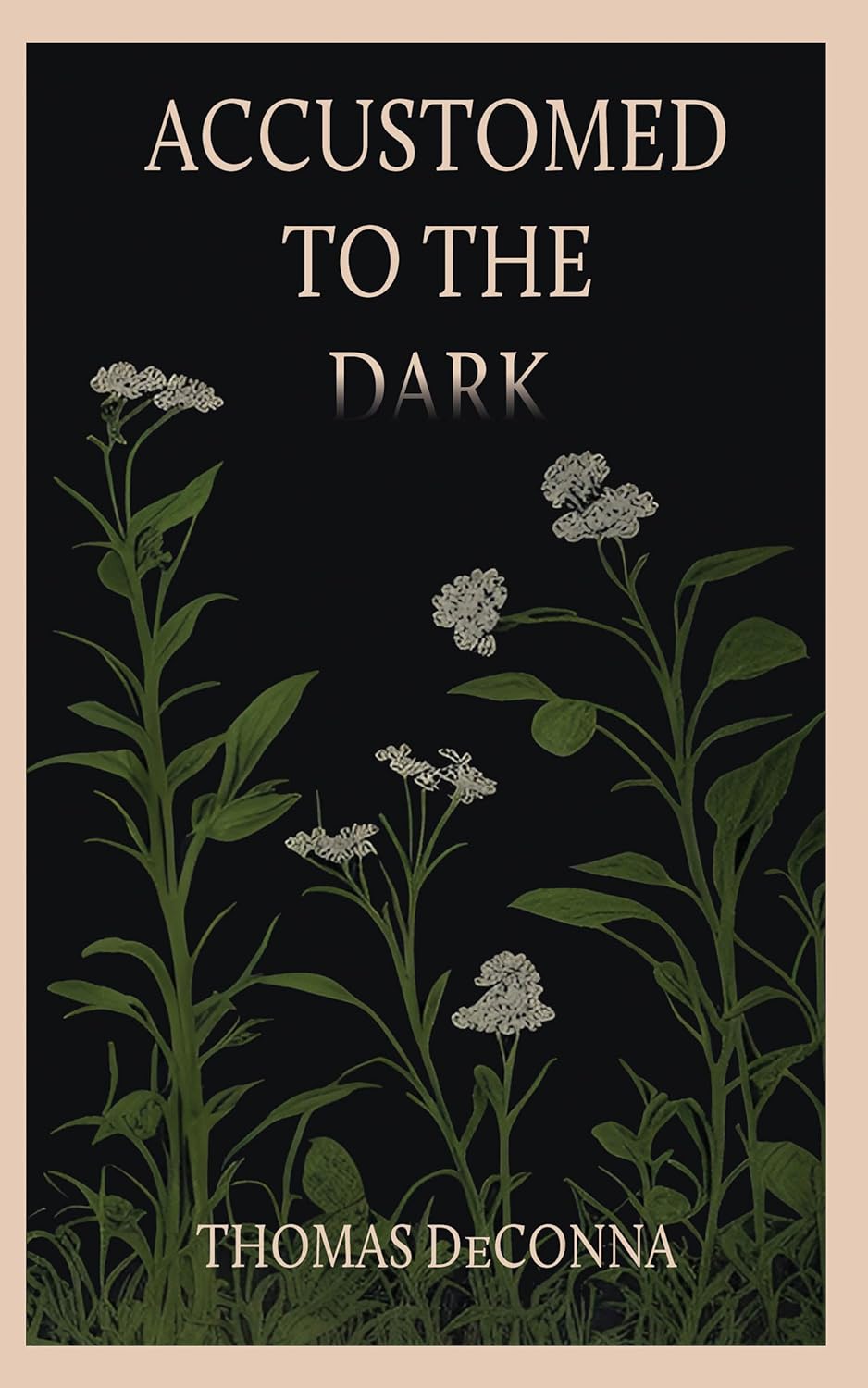Thomas DeConna’s ACCUSTOMED TO THE DARK uses a story-within-a-story framing technique to look at a turbulent time in American history. Young journalist Jenny Smith gets an opportunity to interview reclusive children’s author-illustrator, AJ Kenton, a kindly host with a story to tell. In January 1963, when AJ was in eighth grade, he sold flower seeds for several months to earn his first paint set (though to appear more masculine, he told his father he was working toward a pocket knife). The novel proceeds to show how the young salesman canvassed the community, which brought him face-to-face with his neighbors.
AJ’s home feels like a powder keg ready to blow, as the unseen specter of abuse and mental illness looms large in the Kenton marriage. Similarly, DeConna weaves an unspoken longing for change into each neighbor AJ encounters. Some women (including AJ’s mother) are trapped and broken by the conventions of yesteryear, when husbands “laid down the law” and obedient wives were expected to comply. Other women—like the young high school English teacher and the neighbor Mrs. Billings (who gives AJ a life-changing art lesson)—envision a more hopeful future, where men and women are treated equally. The lesbian “Smith sisters” across town also crave change, hoping for a future where people don’t have to hide whom they love. Out of everyone, the families AJ meets make the biggest impression on him. The Carters, for instance: the neighborhood’s only Black family. They are loving and kind, but the Carter home is run more strictly than the Goldstein or Novello households—which are filled with laughter and food.
The men of Kenton tend to put career ahead of family, sometimes at a terrible cost. Bank president Mr. Billings mansplains to AJ about the importance and power of financial success; meanwhile, his take-home pay supports his proto-hippie wife and her artistic pursuits. Only retired Judge Monroe Franklin understands the importance of work-life balance, except he learned too late. He lives his twilight years in regret, missing his late wife—“I should have given her more experiences, not things”—and longing to reconnect with his estranged son. He spends his afternoons building a crib for a grandchild he may never meet.
An uneasy blend of hope and doom pervades DeConna’s little town of Kenton, (yes, AJ took his hometown as a pen name). DeConna views the first half of 1963 as the end of “innocence” for AJ and America alike. Similarly, AJ’s shattered family is meant to foreshadow the political and social upheaval to come throughout the rest of the ‘60s. Overall, ACCUSTOMED TO THE DARK exists in the not-so-calm that precedes a storm.
The notion that a suburb as culturally diverse as Kenton existed in 1963 requires a suspension of disbelief. It’s also convenient how such a diverse group of characters all treat AJ warmly and invite him into their homes for in-depth political and philosophical discussions. But as an allegory for changing American values, ACCUSTOMED TO THE DARK is a well-written and engaging coming-of-age novel.
Thomas DeConna’s ACCUSTOMED TO THE DARK is an engaging story-within-a-story that examines a cross-section of families in the 1963 American suburbs and serves as a well-crafted allegory for America’s changing values.
~Rob Errera for IndieReader


